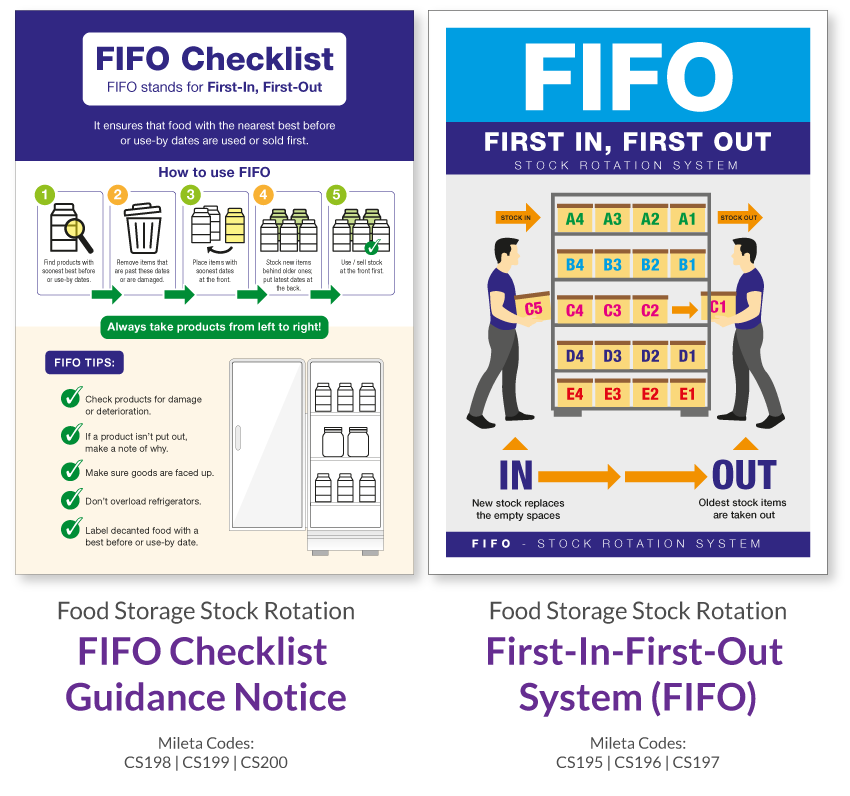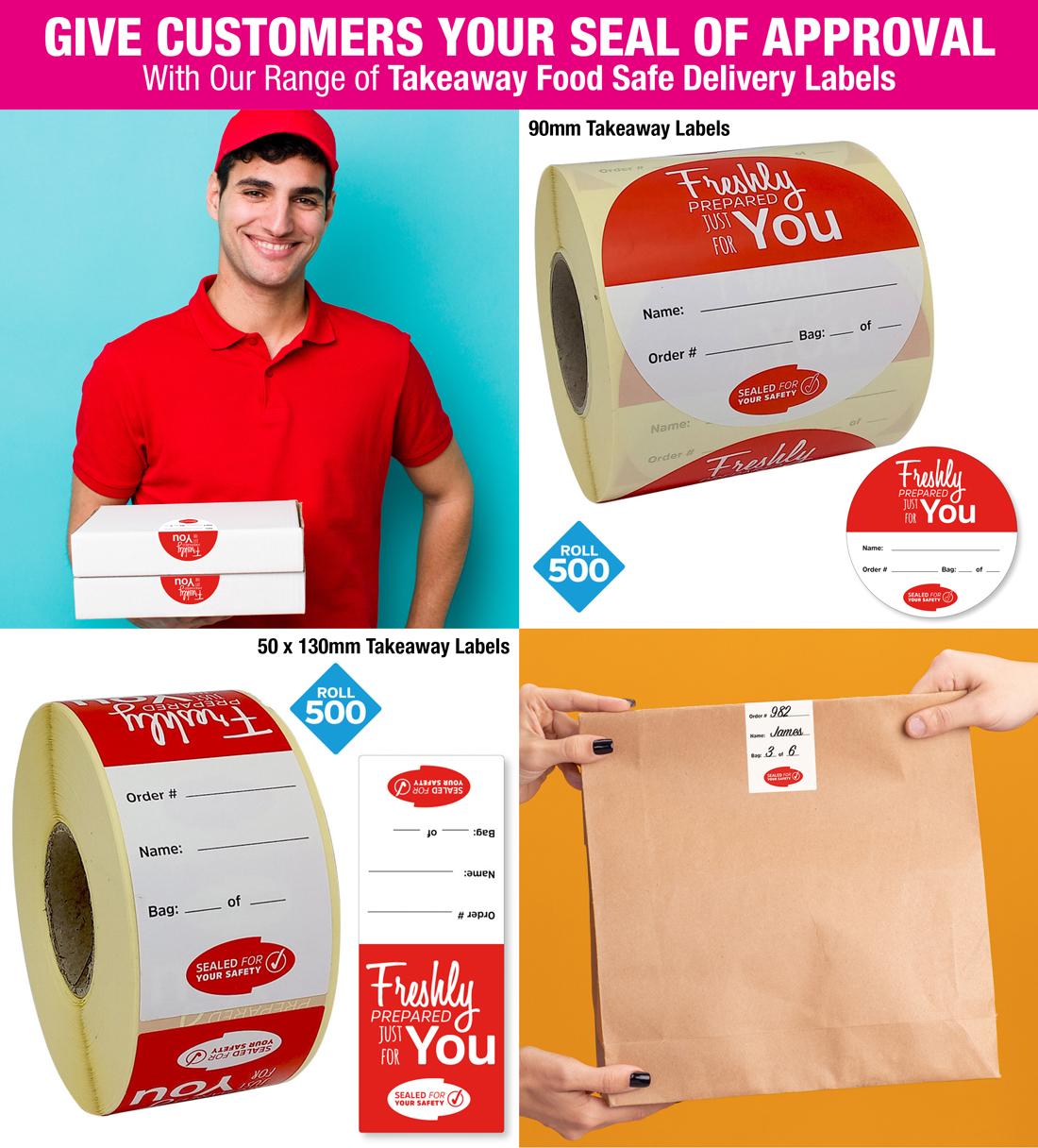FIFO stands for First in, First out, and using a FIFO system is the only way to manage your food storage in the kitchen. The term First In First Out is a handy way to remember that the food that has been bought in first needs to be consumed first. This is so that everything is used when it is at maximum freshness and there are no hidden nasty surprises from using out of date food that may have gone off. As well as keeping everyone safe, FIFO also avoids food wastage.
Why FIFO is so important?
Although keeping to FIFO is easy to follow at home, where it is easy to remember what was bought and when. It is not always as easy in a commercial setting, such as restaurant kitchens. In this situation, it is likely that different staff members are receiving deliveries of raw ingredients and supplies at different times.
This means it is crucial to have a stock rotation system in place, so that everyone knows which food to use first and equally importantly, how to store these fresh supplies so that they can be used in the right order.
With no FIFO system, there is a risk of serving food that is out of date or has gone off. This will result in a lack of food quality and increase the risk of causing food poisoning to customers. FIFO also ensures that a catering team and chef will be able to work confidently and quickly without the need to search for fresh ingredients.
FIFO will also help ensure that a kitchen doesn't have to throw unused food away because it has deteriorated or is out of date according to the label.
5 Simple steps for following the FIFO procedure
1. Always use the products with the closest end dates first, e. the products reaching the end of their best before dates or use by dates.
2. Place the items to be used first at the front of the stock so they are easy to locate.
3. Always use the food that is stored at the front, first.
4. Always store new supplies behind existing stock so that these will be used in the correct order.
5. Check through the stock items to ensure that all food is current, within date and in good condition. If it has expired or seems to be damaged, remove it and discard it.
When it comes to the freezer or the refrigerator, the same rules apply. Where there may be frozen meals or food that has been decanted from another container, it is crucially important to use a label, explaining what the food is and the date.
It is important to check through the refrigerator and the freezer periodically. Frozen food especially can often get missed and even frozen food does have a limited storage life.
Raw meat for example should only be stored in the freezer for a maximum of 6 months, shorter for some types of meats. Shellfish, fish, vegetables and dairy, all have a limited life span, so it is important that you ensure that FIFO guidelines are applied when you stock the freezer.
How to set up your FIFO system
FIFO relies on everyone working to the same system and needs to be fully understood by everyone in the workplace.
The best way to achieve this is to place a FIFO checklist by all storage cupboards, freezers and refrigerators and the staff room so that all employees remain mindful of what is required.
Your checklist should include the 5 basic rules of FIFO mentioned above, plus any other information that is relevant.
FIFO Tips
As well as the basic five steps to FIFO, other useful points to include in your FIFO strategy can include:
- Noting why a certain food has not been used and asking why it has been omitted.
- Not overloading refrigerators and freezers.
- Regularly checking through the stock to ensure that everything is stored in the correct order and that it is in perfect condition.
- Removing any stock which has deteriorated. Checking through the kitchen stock is much easier to do when the kitchen is quiet. Doing this reduces the chances for any missed food items that are out of date, in being used.
The importance of labelling food stored in the freezer or refrigerator
Labelling is important. Without this vital information on stored food, nobody will know just how long any food has been stored. This means that without adequate labelling there is a strong chance that the food may have deteriorated or have even gone off by the time you come to use it.
The best way to ensure that FIFO principles are in place, and to follow a comprehensive labelling strategy, is to provide specially designed labels for the job.
Some commercial kitchens follow a colour coded system – using differently coloured labels for different days of the week which makes the food product instantly visible to people using it, such as chefs who need to work quickly and without wasting valuable time.
The important information to note on a label includes the type of food being stored, the date it was stored, the use by date and the staff member’s name.
The labels need to be left in place by the freezer or refrigerator along with pens so there is no excuse why anything should be stored without being labelled.
Check out our range of Day of the Week Food Storage Labels >>
Benefits of FIFO
Good practice in stock rotation and FIFO underpins the whole integrity of any commercial kitchen.
Benefits of FIFO include:
Less food wastage – By ensuring that you use up food while it is still in good condition and edible although approaching its end of life, you will save resources and money as well.
Not all food wastage is down to poor stock rotation or failure to observe correct FIFO practice but it is highly likely that this does account for a large percentage of waste.
Better Food Safety – FIFO helps to ensure that all food is compliant with food hygiene standards. It is crucially important that all employees have up to date Food Hygiene training in order to understand why FIFO matters so much.
Improved Customer Satisfaction – Good food storage practices makes the kitchen easier to navigate so less time is wasted by searching for food items and trying to decide whether the food itself is up to scratch. This adds up to faster service and an improved customer experience.
FIFO helps compliance with food safety regulations – All UK catering businesses must comply with HCAAP standards. This stands for Hazard Analysis and Critical Control Points and is a food safety management system set up by the World Health Organisation in the sixties. It became mandatory for all UK companies since 2006 to comply with HCAAP in order to avoid food poisoning and outbreaks of E.coli and similar.
FIFO improves the efficiency of the kitchen – Storing food correctly in an easily understandable order, will improve the efficiency of the kitchen. The chef will know exactly which food he or she is supposed to be using. If you have to occasionally hire relief chefs to cover absence, the new chef will find it much easy to operate in an unfamiliar kitchen if the food storage follows a sensible well thought out plan and everything is labelled.
Good FIFO practice helps menu planning – If you are a private restaurant or catering business with control over what you serve to customers, knowing when a batch of food needs to be consumed can be factored into your menu. That way you can ensure that very little food is wasted.
Check out our range of Food Storage & Temperature Notices >>
Source: www.cpdonline.co.uk







